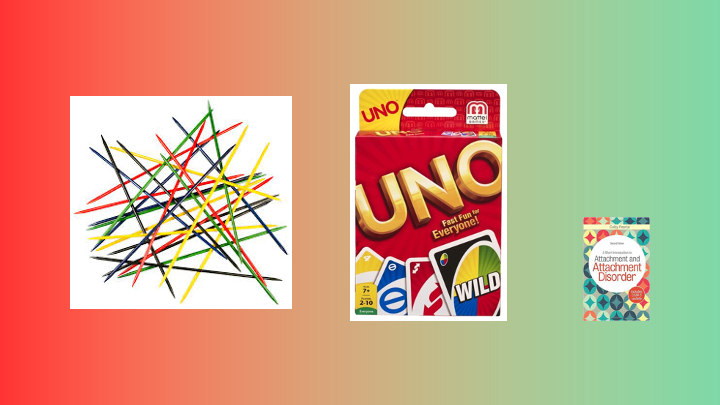
Another way to help young people develop the words to express their experience, and the motivation to do so, involves a simple adaptation of the game Pick up Sticks. At a time when they are likely to be willing and or interested in doing so, challenge them to a game of Pick-up-Sticks. Allocate an emotion to go with each different colour stick (e.g. happy, for yellow; blue, for sad; red, for angry). Leave one colour as a free pass. Play the game in the following manner:
- First, for each stick successfully removed each player has to say something that makes them happy, sad, angry, etc; reflecting the emotion that corresponds with stick colour. If they can’t identify something, they must put the stick back.
- Then, in a second game, each player has to say what the other said made them happy, sad, angry, etc, corresponding to the colour of each stick successfully removed. It is possible to be less strict regarding accuracy here. What is important is that you have the opportunity to say what makes then happy, sad, angry, etc.
Another game that, played in a certain way, supports opportunities to communicate about the experience of the young person is Uno. To find out more, I refer you to my book A Short Introduction to Attachment and Attachment Disorder (Second Edition).
Click here to enter the next page of this module.
To go back, click here.
To access the handbook for this self-paced learning module, click here.
